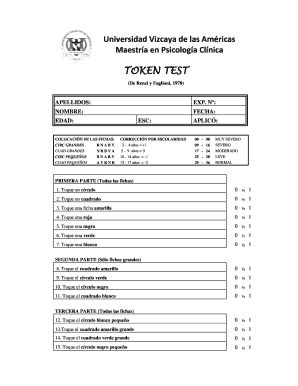Unemployment Paperwork: What Documents Do You Need to File?

Dealing with unemployment can be an emotional roller coaster, but understanding the paperwork required to file for benefits can make the process smoother and less stressful. In this comprehensive guide, we'll explore the essential unemployment paperwork you need to gather to successfully file your claim, as well as provide insights into how to obtain these documents, and tips for ensuring your application is processed quickly.
Documents Required for Unemployment Filing

Before you can file for unemployment benefits, you need to prepare several key documents. Here’s a list of the standard paperwork needed:
- Driver’s License or State ID: This helps verify your identity.
- Social Security Number (SSN): Essential for personal identification in your application.
- Proof of Citizenship: Birth certificate, passport, or other acceptable proof.
- Employment History:
- Names and addresses of all employers in the past 18 months.
- Date of first and last day of work for each employer.
- Reason for leaving each employer (if applicable).
- Earnings: Pay stubs for the past 18 months or wage summaries from your employer.
- Severance Agreement: If you received severance, this might impact your benefits.
- Union Membership Card: If you’re part of a union, they might provide additional benefits.
- Direct Deposit Information: For benefit payments.
How to Obtain Unemployment Documents

Here are some steps to help you gather these crucial documents:
- Identification:
Most states require you to verify your identity. Your driver’s license or state ID should suffice. If you’ve misplaced these, contact your local DMV for replacement options.
- Proof of Citizenship:
You can obtain a copy of your birth certificate from the vital records office in the state where you were born. For passports, consider renewals or replacements through the U.S. Department of State or at passport acceptance facilities.
- Employment History:
Gathering employment details can be time-consuming. Check old tax forms (like W-2s or 1099s) or inquire with previous employers. They may provide a record of your employment history, often at a small fee.
- Pay Stubs and Wages:
Request copies of pay stubs from your employer. If you’re self-employed or an independent contractor, compile your income statements for the past 18 months.
Completing the Application

Filing your unemployment claim involves several steps:
- Online Application:
Most states offer an online portal for filing claims. You’ll enter all your information into the system. Ensure all data is correct before submitting.
- Phone Filing:
Some states or special circumstances might require you to file over the phone. Prepare all your documents and expect potentially long wait times.
- Verify Identity:
Your state unemployment office will likely use security questions, knowledge-based authentication, or even send a pin to your email or phone to verify you are who you say you are.
- Signatures:
Some states require you to sign forms, either electronically, via a scanned document, or in-person at an unemployment office.
⚠️ Note: Always check your state’s unemployment department website for specific requirements and processes, as they might differ from state to state.
Steps to Take if Documents are Missing

If you can’t find some of these documents:
- Contact former employers: They might be able to provide the necessary information or replacements.
- Reach out to HR departments: They might have records or be able to help locate your employment history or pay stubs.
- Visit the local vital records office: For birth certificates or other proofs of citizenship.
- Contact your union: If you’re a member, they might have employment records on file.
👁️ Note: Keep in mind that while some states allow you to file without all the paperwork, providing all the documentation upfront speeds up the process and reduces the chance of delays or requests for further information.
Recapping the vital points discussed in this guide, understanding unemployment paperwork is crucial for a smooth filing process. You need to gather documents like your ID, SSN, proof of citizenship, employment history, earnings, severance agreements, union membership card, and banking information for direct deposit. Obtaining these documents might involve visiting government offices, contacting previous employers, or using online resources. Filing your claim requires you to enter this information correctly and accurately. Even if some documents are missing, you can still apply; however, providing all information upfront will hasten the review process. Remember that each state's process might slightly differ, so always refer to your state's unemployment agency for the most current information.
What should I do if my employment history is hard to verify?

+
If your employment history is difficult to verify, contact HR departments from your previous employers or use your old tax documents. Alternatively, sometimes independent witnesses or co-workers can corroborate your employment.
Can I file for unemployment if I was self-employed?

+
Yes, under the CARES Act, self-employed individuals, freelancers, and gig workers are now eligible for unemployment benefits, known as the Pandemic Unemployment Assistance (PUA). You’ll need to provide income proof from the past year.
What happens if I submit incorrect or incomplete information?

+
If you submit incorrect or incomplete information, your claim might be delayed or denied. Make sure all your paperwork is accurate and up-to-date to avoid unnecessary complications.



